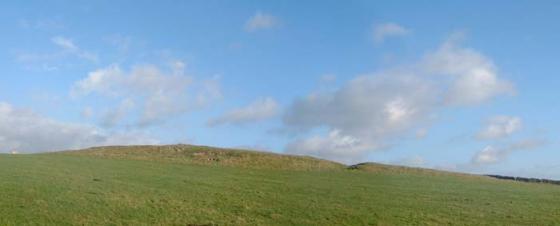



Relocated rock art.

No rectangular blocks visible.

Apologies for the rectangular stones in the pic. I blame that bloody great wall nearby.
I visited the Roman site in Corbridge last month but didn’t see this cup marked stone. Don’t know whether I just missed it or it has been moved? It certainly wasn’t in the museum and there is no mention of it in the official E.H. visitor’s guide.
Those who refer to the Ancient Italian Wall Builders as ‘R*mans’ will not like this site.
It’s rock art that’s been kidnapped by the Romans! The fiends!
It’s smack bang in the English Heritage Corbridge site. Hence quite easy to find, but incurs a £3.50 admission fee.
I was a bit deflated to find that no mention is made of it in the obligatory ‘stuff that was found here’ museum, especially given that it is placed on the edge of a mystery building. And you know what mystery buildings were used for doncha? Ritual purposes. Which begs the question, what were romans, or romano brits doing lugging what looks like it was a great lump of earthfast rock art, all the way into some strange structure, of purpose unknown, at a site that had alleged mithraic cult activity? Questions should be asked in parliament.
I couldn’t help think that it may have come from the same ridge as the possible cist cover at St John Lee. This ridge overlooks the eastern end of the confluence of the North and South Tyne, and would have been a very useful place to spy out the land. In such places is free range rock art found round these parts.
Ask at the till which is building 11, and approach it along the stanegate. It rests on a low wall, conspicuous as the only stone that isn’t a rectangular lump.
‘A cup-marked stone in the Roman town of Corstopitum’ – a short article by R H Walton in the 1962 edition of the History of the Berwickshire Naturalists’ Club.
“Only the other day, gang after gang of Irish labourers was dismissed rather than agree to put an air-port runway across some thorn trees which they considered to be free from interference – even in the cause of “Progress.” Perhaps the British workmen thought the same thing, in 200AD.”







































